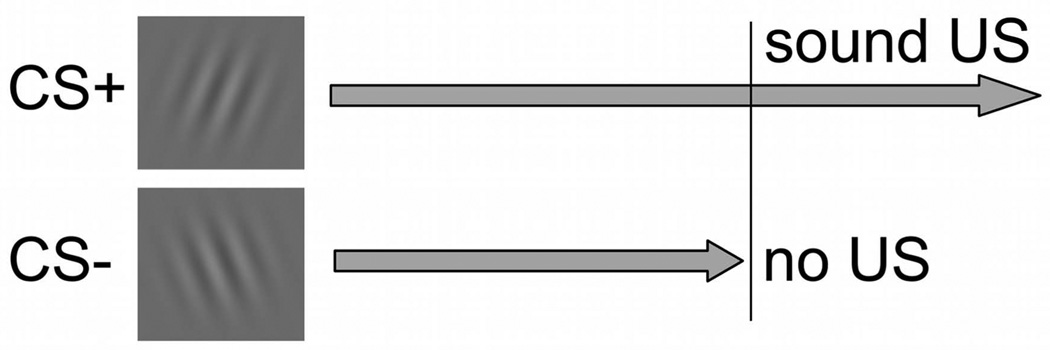Figure 1.
Differential classical conditioning paradigm, in which the orientation of the grating stimuli (Gabor patches) predicts the occurrence of a noxious stimulus. In the present study, the CS+ predicting the loud noise (US) is presented alone for 6.7 or 7.1 seconds, then accompanied by the US for an additional 1.3 seconds, upon which the stimuli co-terminate. The CS− is never paired with the US, and terminates after 6.7 or 7.1 seconds, respectively.

